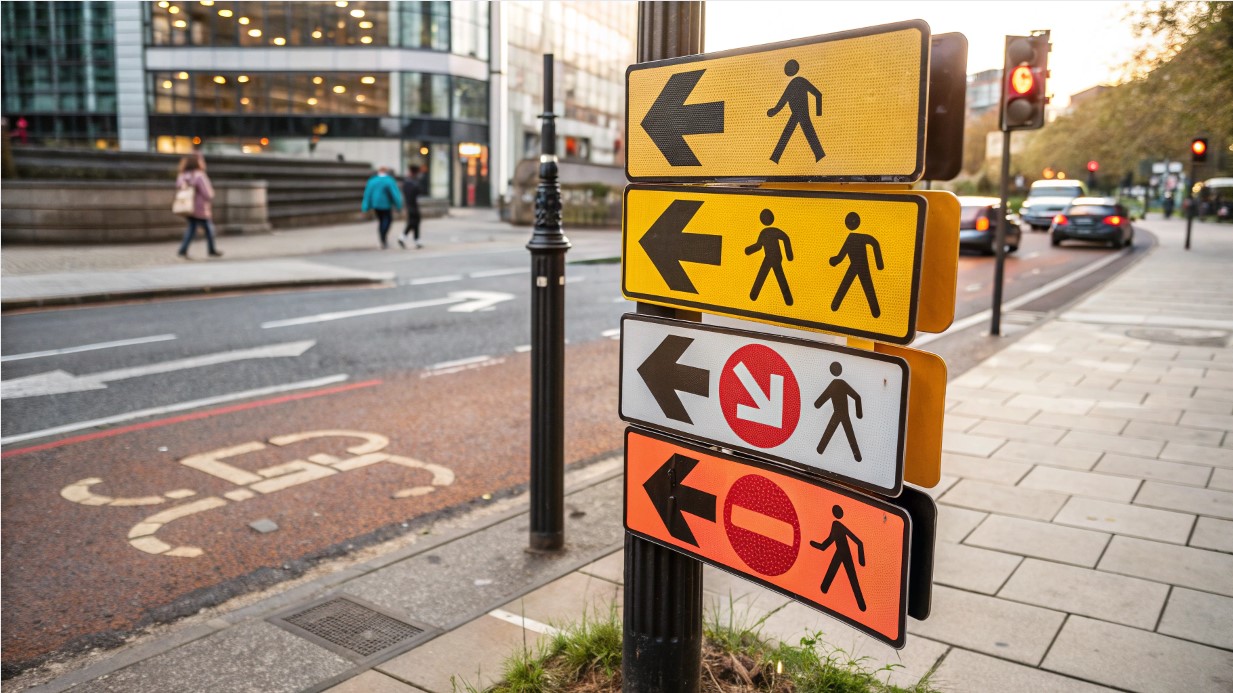Signs
Directional Signs – Easy-to-Read & Customizable
Guide your visitors with directional signs! Customizable, durable, and perfect for offices, events, and public spaces. Shop now at BeeBanner!
In a world where time is precious and clarity is key, directional signs play a crucial role in guiding people where they need to go. Whether you’re managing a busy office in Toronto, organizing a festival in Vancouver, rbc action direct sign in, or running a retail store in Calgary, directional signs are essential for creating a seamless and stress-free experience for your visitors.
- Wayfinding signs in malls or hospitals.
- Parking signs in office complexes.
- Event signs at festivals or conferences.
Why Directional Signs Are Essential in Canada
- Improve Navigation: They help people find their way quickly and easily, rbc direct investing sign in, reducing frustration and confusion.
- Enhance Safety: Clear signage can prevent accidents and ensure smooth traffic flow.
- Boost Customer Satisfaction: A well-guided experience leaves a positive impression on visitors.
Why Your Business or Event Needs Directional Signs in Canada
1. Create a Seamless Experience
In Canada’s bustling cities, people appreciate clear and efficient navigation. Directional signs ensure that your visitors can find their way without hassle.
2. Save Time and Resources
By reducing the need for staff to give directions, directional signs free up your team to focus on more important tasks.
3. Reflect Professionalism
High-quality directional signs show that you care about your visitors’ experience and pay attention to detail.
How to Design Effective Directional Signs
1. Keep It Simple and Clear
Your signs should be easy to read and understand at a glance. Use bold fonts, direct current sign, high-contrast colors, and minimal text.
2. Use Universal Symbols
Incorporate symbols like arrows, restroom icons, kindle direct publishing sign in, kindle direct publishing sign in, or parking logos to make your signs universally understandable.
3. Choose Durable Materials
In Canada’s diverse climate, your signs need to withstand rain, snow, sign in rbc direct investing, and UV exposure. Opt for weather-resistant materials like aluminum or acrylic.
4. Include Essential Information
Make sure your signs provide:
- Clear directions (e.g., “Parking Lot →”).
- Distances or estimated walking times (e.g., “Restrooms: 100m”).
- Multilingual text, especially in multicultural cities like Toronto or Montreal.
Creative Uses of Directional Signs in Canada
1. Retail Stores and Malls
- Guide shoppers to specific departments or promotions.
- Highlight restrooms, exits, or customer service desks.
2. Offices and Corporate Spaces
- Direct visitors to meeting rooms, reception areas, or parking lots.
- Use floor decals or wall signs for a modern, professional look.
3. Events and Festivals
- Help attendees find stages, food stalls, or restrooms.
- Use temporary signs for one-time events.
4. Public Spaces
- Provide directions in parks, transit stations, or tourist attractions.
- Use maps or trail markers for outdoor spaces.
Directional Sign Trends in Canada
1. Eco-Friendly Materials
As Canadians become more environmentally conscious, sign of directly proportional, ing direct canada sign in, businesses are opting for signs made from recycled or sustainable materials.
2. Digital Integration
Interactive signs with touchscreens or QR codes are gaining popularity in malls and large venues.
3. Minimalist Designs
Clean, shaw direct sign in, royal bank direct investing sign in, modern designs with simple fonts and neutral colors are trending in Canadian businesses.
4. Multilingual Signage
In multicultural cities like Toronto and Vancouver, rbc action direct investing sign in, multilingual signs are essential for inclusivity.
FAQs About Directional Signs
1. What Is a Directional Sign?
A directional sign helps people find their way by pointing to exits, rooms, or important locations. You’ll see them in malls, hospitals, offices, and other busy places. These signs make it easier for visitors to get around and keep spaces well-organized.
2. Where Should I Place Directional Signage?
Directional signs should go where people need guidance the most. Good spots include building entrances, hallways, parking lots, and near elevators or stairways. Make sure they’re easy to see, placed at eye level, and positioned where people make decisions on where to go.
3. What Size Should My Directional Signs Be?
The size of your sign depends on how far people will be when reading it. For indoor use, 6-12 inches is usually enough. Outdoor signs should be 18-24 inches or larger so they’re easy to read from a distance. Bigger spaces may need even larger signs.
4. How Long Does It Take to Print Directional Signs?
Printing times vary based on size, material, and order quantity. A simple sign can be ready in 1-3 days, while custom or bulk orders may take a week or more. If you need them quickly, many printers offer rush services.
5. Where Can I Buy Directional Signs in Canada?
You can find directional signs at online print shops, local signage companies, and printing stores across Canada. Many places offer custom options in different materials and sizes. Check out sign manufacturers’ websites or visit a local supplier for the best deals.
Personal Experience:
As an event organizer in Ottawa, I’ve seen firsthand how directional signs can make or break an experience. At a recent festival, we used a combination of floor decals, wall signs, and temporary A-frame signs to guide attendees through the venue. The result? A smooth, stress-free event with zero complaints about lost visitors.
Why Directional Signs Matter
What I love most about directional signs is their ability to solve problems before they even arise. By anticipating your visitors’ needs and providing clear guidance, you can create a positive and memorable experience.
Conclusion:
In a fast-paced world where clarity and efficiency are valued, directional signs are an essential tool for businesses, events, and public spaces. They improve navigation, enhance safety, and leave a lasting impression on your visitors.


